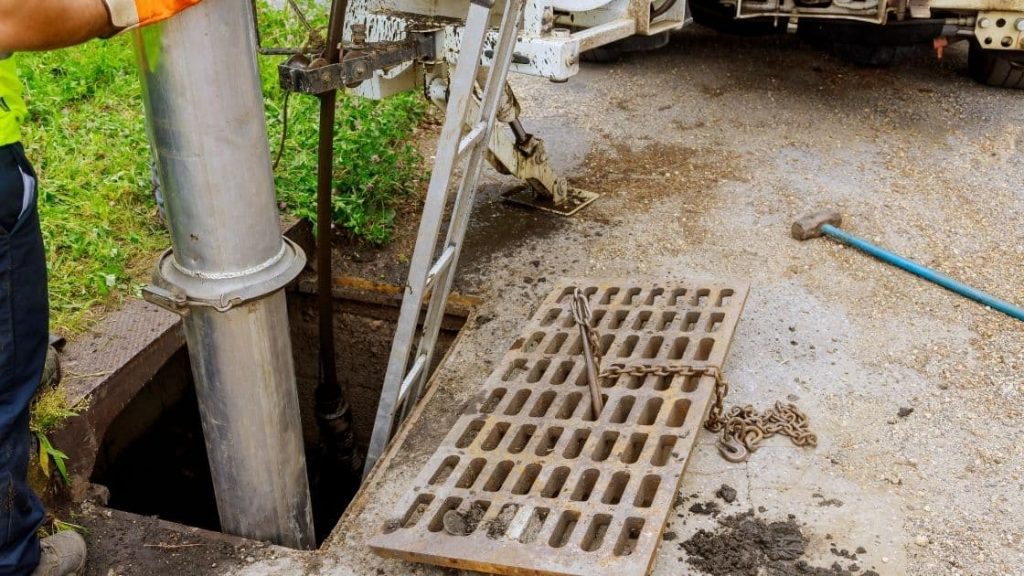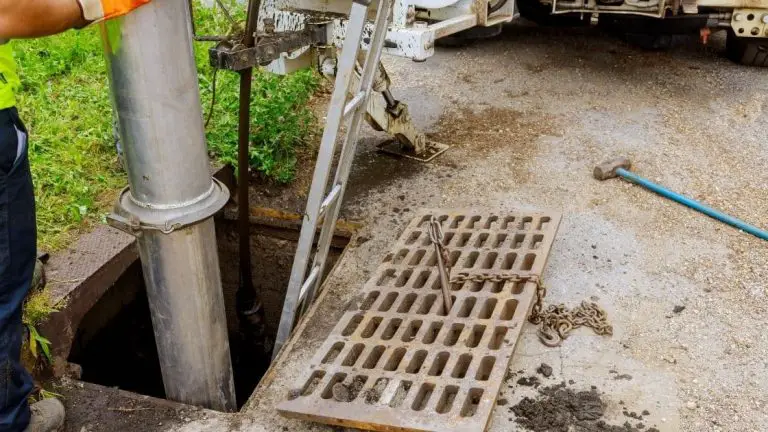Most people don’t know where their washing machine’s wastewater goes.
Especially if they moved into a new home that never necessitated investigating where exactly their washing machine drain runs to.
At a point while using your washer you may encounter some problems that will interest you to know where your washer drains to.
If you are building or moving into a new home you may also be wondering where you can drain your washer, that doesn’t go against the building regulations in your area.
The sewer line is one of the first places you would think about when trying to find out where your washer drains to.
But does a washing machine drain into a sewer?
Yes, in most homes, the washing machine drains into the sewer line together with other utilities such as the sinks and tub. This is because the sewer line is the main drain that carries wastewater to your municipal sewer system.
In this article, we explore in detail how washing machines drain into sewer lines and all the possible places a washing machine can drain into.
Table of Contents

What is a sewer line?
A sewer line is a network of pipes that carries wastewater from toilets, showers, baths, and sinks to a septic tank or a municipal treatment plant.
The main function of a sewer line is to remove all the wastewater from homes so that it can be treated before being released back into the environment.
In most cases, the sewer lines are buried underground and they are usually connected to the main sewer line that runs through a city or town.
The main sewer line is then connected to a treatment plant where all the wastewater is treated before being released into rivers, lakes, or the ocean.
Most homes in the United States are connected to a municipal sewer system, but there are some homes that have their own septic tank.
A septic tank is a small treatment plant that is usually located in the backyard of a home.
The septic tank treats the wastewater from the home before releasing it into the ground.
In some cases, the water from the septic tank can be used to irrigate the yard or garden.
Can a washing machine drain into a sewer line?
Now that we know what a sewer line is and what its main function is, let’s find out more about a washing machine draining into a sewer line.
The short answer is yes, a washing machine can drain into a sewer line.
Wastewater from your washing machine is considered sewage and it is typically drained into the main sewer line that runs through your city or town.
From there, the wastewater is taken to a treatment plant where it is treated before being released back into the environment.
However, there are some homes that are not connected to a municipal sewer system and they have their own septic tank.
In these cases, the wastewater from the washing machine is drained into the septic tank where it is treated before being released into the ground.
So, whether your home is connected to a municipal sewer system or not, the answer is still the same, a washing machine can drain into a sewer line.
Where else can a washing machine drain?
You may ask, where does washing machine water drain to?
In addition to draining into a sewer line, a washing machine can also drain into the following systems or utilities:
1. A floor drain
A floor drain is a drain that is located on the floor of a home or building.
The floor drain is typically connected to the main sewer line and it is used to collect wastewater from various appliances and fixtures, including washing machines.
Your floor drain will typically be located in your laundry room, basement, or garage.
2. A utility sink
A utility sink is a type of sink that is usually larger than a standard sink and it is typically used for washing clothes, cleaning up after pets, or as a workspace for projects that require a lot of water.
Utility sinks are typically made of stainless steel or porcelain and it is usually located in the laundry room, basement, or garage.
In most cases, the utility sink is connected to the main sewer line, but there are some that are connected to a septic tank.
3. A sump pit
A sump pit is a hole in the floor that is usually located in the basement of a home.
The sump pit is used to collect water that has seeped into the basement, and it is typically connected to a sump pump which pumps out the water into the main sewer.
In some cases as well, the sump pit is connected to a septic tank.
So, as you can see, there are a few different places that a washing machine can drain.
Can I drain my washer into my yard?
Water from your washing machine is considered gray water, which is a type of water that is safe to drain into your yard with minimal treatment.
You can dilute the water with your rinse cycle water or even fresh water.
This will reduce the concentration of the chemicals in your washer water.
So, if you have a garden or lawn that needs watering, you can channel your washing machine water there.
However, there are additional things that you need to keep in mind if you decide to do this.
First, you need to make sure that you are using environmentally-friendly and biodegradable detergents and soaps.
These detergents are known as biodegradable as they are destroyed by bacteria and will be less harmful to your plants and lawn.
Second, you need to make sure that your washing machine is draining into an area of your yard that is not going to cause any flooding.
You also need to be aware of the local regulations regarding gray water drainage as there may be some restrictions in place.
Final thoughts
It’s important to know where your washing machine drains so that you can properly maintain your home’s plumbing and avoid any potential problems.
Most washing machines drain into the sewer line, then to the municipal treatment.
If you’re not sure where your washing machine drains, it’s best to contact a licensed plumber.
They will be able to properly inspect your home’s plumbing and advise you on the best course of action.
Resources:

